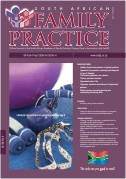Chronic Persistent Asthma: A Review of Medicines in the Step-Up Approach
Keywords:
chronic asthma, corticosteroids, leukotriene modifiers, theophylline
Abstract
The medications used in asthma have been the subject of intense study over the last three decades. We now have extensive insights into their structure, regulation, receptors and mechanisms of action. Their intersection with the complexity of asthma inflammation has also been well characterised. In parallel, good quality pharmaceutical trials have informed national guidelines and patient-centered outcomes have been explored. With this therapeutic armamentarium the practitioner should aim to achieve the goals of asthma therapy that are focused on clinical and lung function parameters. The concept of complete asthma control is the current benchmark. Airway inflammation is the fundamental problem in asthma and, logically, anti-inflammatory therapy in the form of inhaled corticosteroids is the single most important intervention. The importance of appropriate use of inhaler devices cannot be sufficiently emphasised. The clinician carefully titrates this treatment utilising additional medications for synergy and to modulate side-effects and costs. The contemporary standard of asthma care is a single inhaler with a combination of inhaled corticosteroids (ICS) and long-acting beta adrenoceptor agonists. The alternative is to add leukotriene modifiers to ICS therapy; there are special circumstances when this may be more appropriate. Poor inhaler use and concomitant allergic rhinitis are examples when supplementation with anti-leukotriene agents would be prudent. With whatever therapeutic strategy, regular education of the patient, tailoring of medication and monitoring of asthma are still crucial to ensure that the goals of asthma control are achieved and maintained in the long term.
Published
2008-07-15
Section
CPD
By submitting manuscripts to SAFP, authors of original articles are assigning copyright to the South African Academy of Family Physicians. Copyright of review articles are assigned to the Publisher, Medpharm Publications (Pty) Ltd, unless otherwise specified. Authors may use their own work after publication without written permission, provided they acknowledge the original source. Individuals and academic institutions may freely copy and distribute articles published in SAFP for educational and research purposes without obtaining permission.

